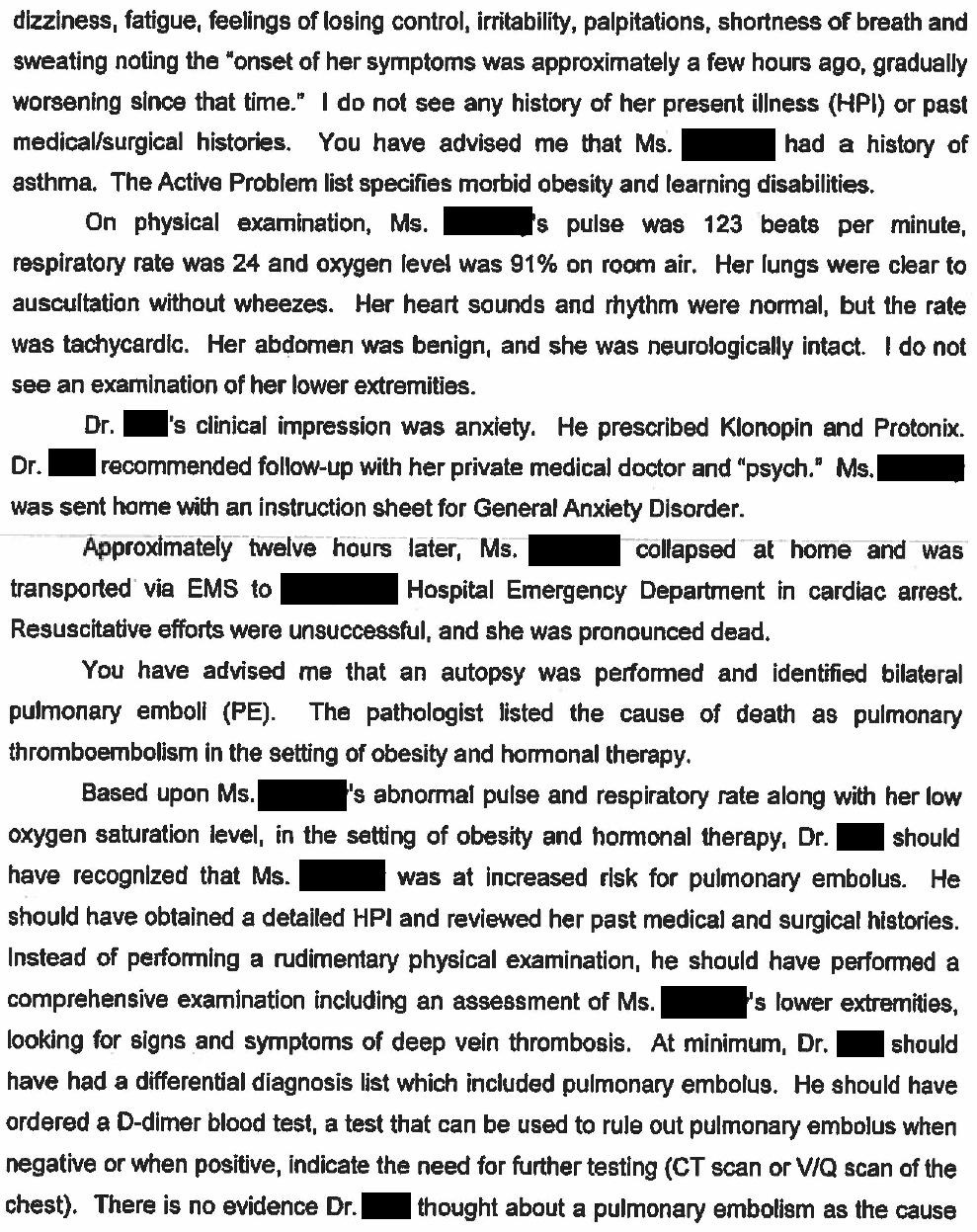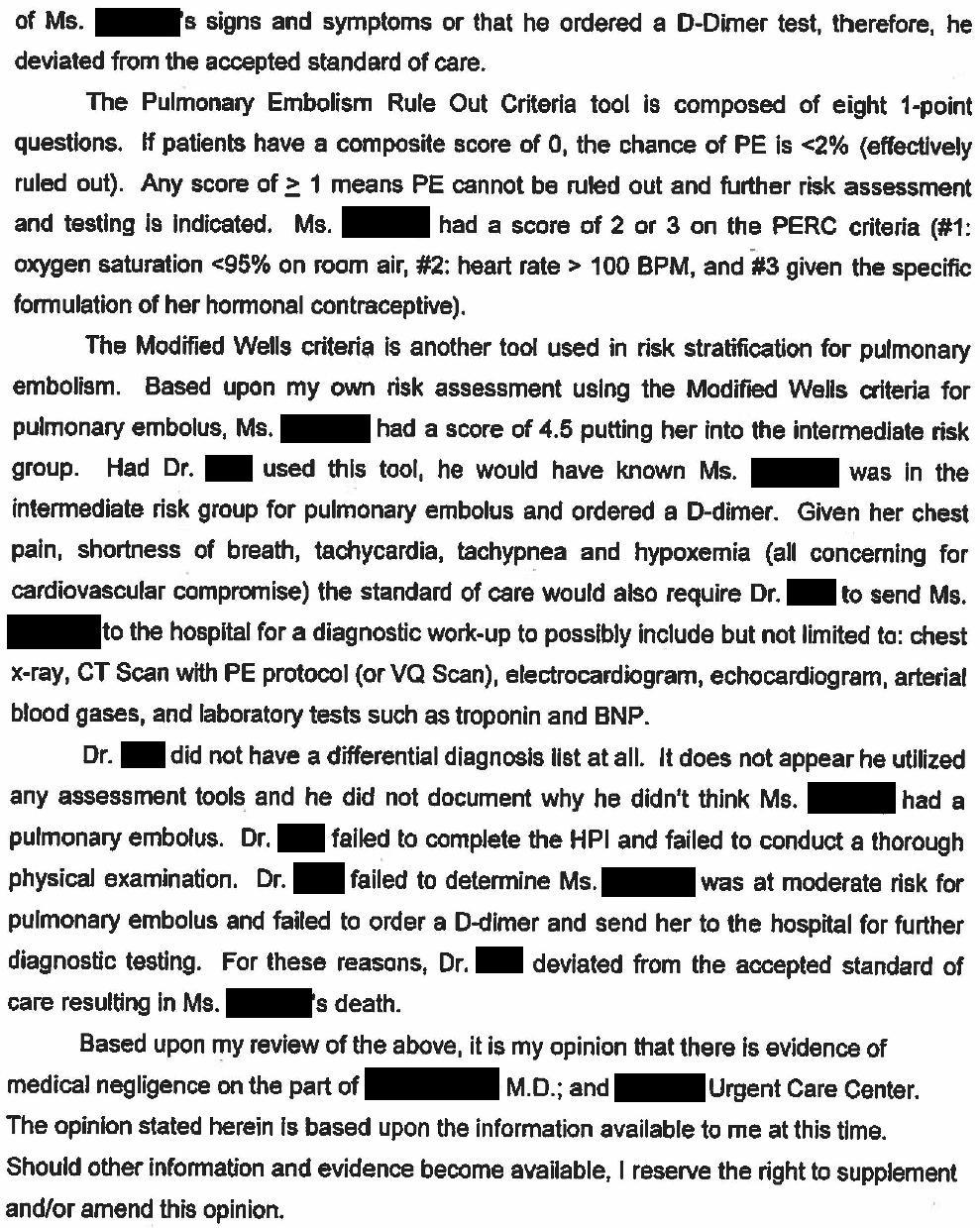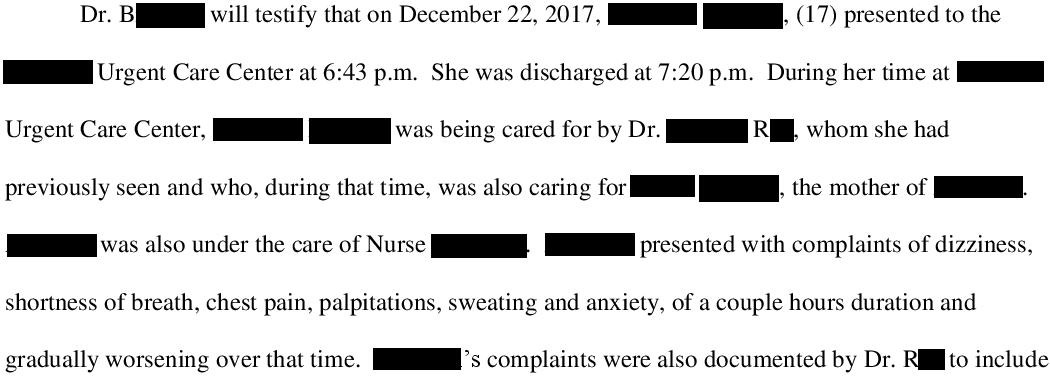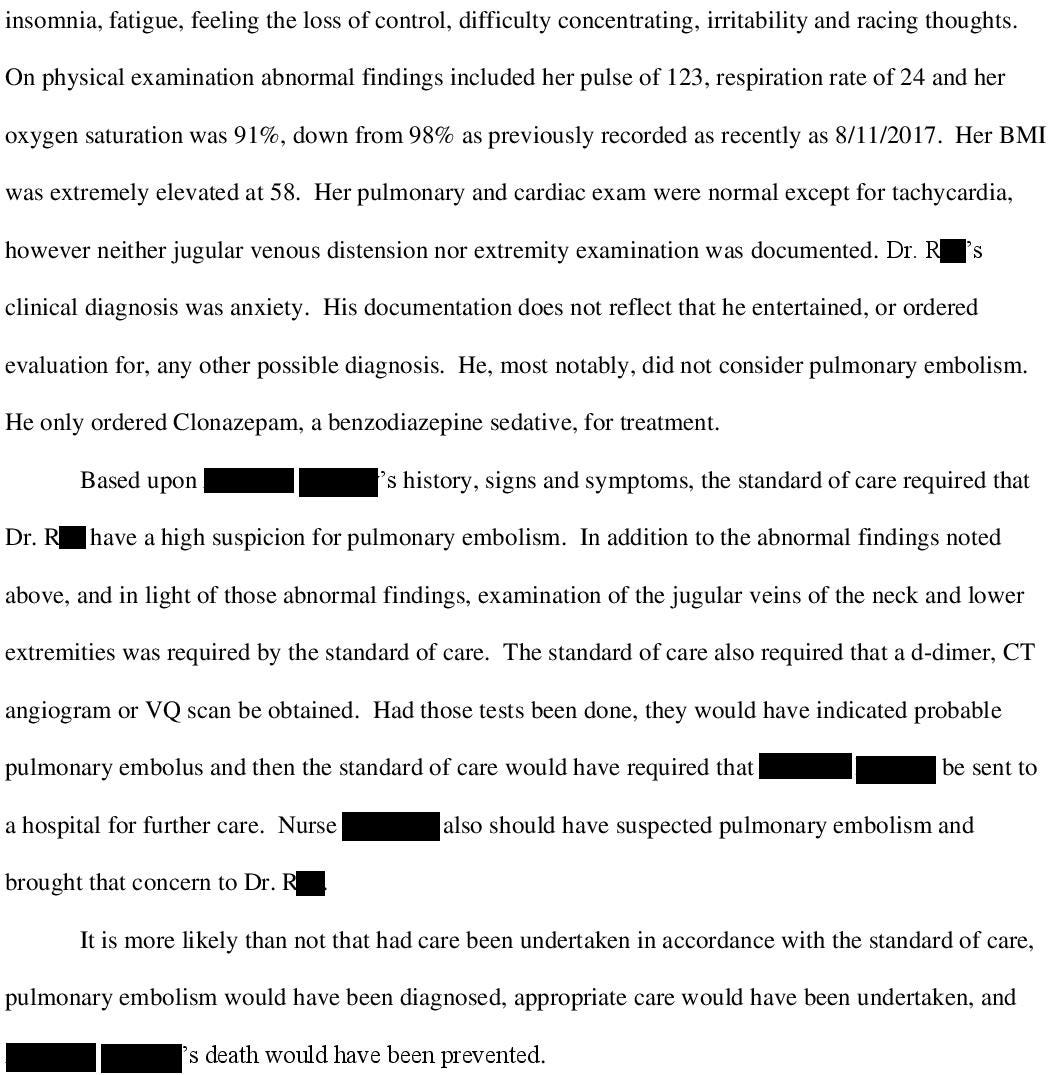A 17-year-old girl presented to an urgent care.
When asked why she came in, she reported a slew of symptoms that included dizziness, shortness of breath, and anxiety.
Her initial vital signs showed a heart rate of 123bpm, respiratory rate 24/min, and O2 sat of 91%.
The patient’s PMH included obesity and asthma.
She was on Depo-estradiol for contraception and had just returned from a long car trip.
She had been using her inhaler without relief.
The physician (Dr. R, IM-trained) saw her and did a physical exam.
No labs or imaging were ordered.
He diagnosed her with anxiety, ordered PO clonazepam, and discharged her.
Several hours later she collapsed at home and went into cardiac arrest.
She was pronounced dead at the ED.
Autopsy confirmed bilateral PE as the cause of death.
Join thousands of doctors and lawyers on the email list:
The patient’s mother contacted an attorney and a lawsuit was filed.
The expert witness for the plaintiff wrote the following opinion:
The plaintiff also hired a pulmonologist.
His letter revealed that both the patient and her mother checked in as patients at the same time.
The plaintiffs offered to settle for $7,500,000.
After several years, both sides reached a confidential settlement and the lawsuit was withdrawn.
MedMalReviewer Analysis:
This was a very bad miss. It’s hard to know what the physician was thinking. There were numerous red flags here concerning the care he provided:
Tachycardia, tachypnea and hypoxia of this severity can’t be dismissed.
PE risk factors were ignored.
The patient had documented diaphoresis and no workup was done.
Diagnosing patients with anxiety before ruling out life-threatening diagnoses is a critical error.
Prescribing clonazepam to a child after a brief urgent care visit is highly suspicion, even if she truly did have anxiety.
There are a few things that I think may have influenced this doctor’s poor decision-making:
Pressure for efficiency. Labs and imaging take time and there are often outside influences that make doctors cut corners to work faster.
There is a low index of suspicion for critical illness in urgent care. If you arrive to work with a mindset that no one will be critically ill, you’ll miss emergencies.
The fact that the patient was not taking daily oral contraceptives, as opposed to periodic depo injection, may have led to a miscommunication. The phrasing we use when taking a history is critical.
Lack of training in the care of pediatric patients may have given this IM-trained doctor false reassurance if he incorrectly believed that she was not at risk for PE.
The fact that the patient’s presentation was part of a “two-fer” visit (2 patients from the same family checking in at the same time). Outside of carbon monoxide poisoning, its extremely rare for either party of a two-fer check-in to have a critical illness. This case is an exception.
I take issue with the expert’s discussion of PERC. He is not applying it properly. PERC is only appropriate when a patient has already undergone risk stratification and deemed to be low-risk. Risk stratification can be done with Modified Well’s criteria, Revised Geneva criteria, or an experienced physician’s gestalt.
According to public record searches, the patient’s mom is an LPN. This is an anecdotal pattern I’ve seen with many malpractice cases. I suspect that having a close family member with medical training increases the likelihood that a bad outcome will lead to a lawsuit.










The email version of this case asked for other examples of critically ill two-fers:
I once saw a two-fer in the emergency department "fast track" during the peak of COVID, both of whom had a known COVID exposure & COVID-like symptoms, but one of whom mentioned urinary frequency as an associated symptom. An astute RN had the patient give a urine sample before I examined them, and because it was at the bedside, I happened to send it for analysis. UA notable for large amounts of glucose and ketones - further workup noted pH 6.9 (and in that context, I identified Kussmaul respirations that I initially attributed to COVID). COVID + new-onset DM in DKA, admitted to ICU. Had the urine not been sitting at the bedside, I think between triage bias & confirmation bias I would have sent the COVID test, clinically treated for viral symptoms, and discharged home. Eternally grateful that a proactive RN helped me not miss this case!
Attributing symptoms to anxiety or panic attacks is fraught in any setting. IMO it's dangerous and irresponsible. I never once gave my UC colleagues grief for turfing patients to the ED-they shouldn't be expected to manage sick people (and we shouldn't insist that they do).
I killed a patient in my first year out of training. Diagnosed/treated pneumonia when it was in fact a PE/pulmonary infarct. Fortunately the family did not sue. That miss stayed with me for the entirety of my career.